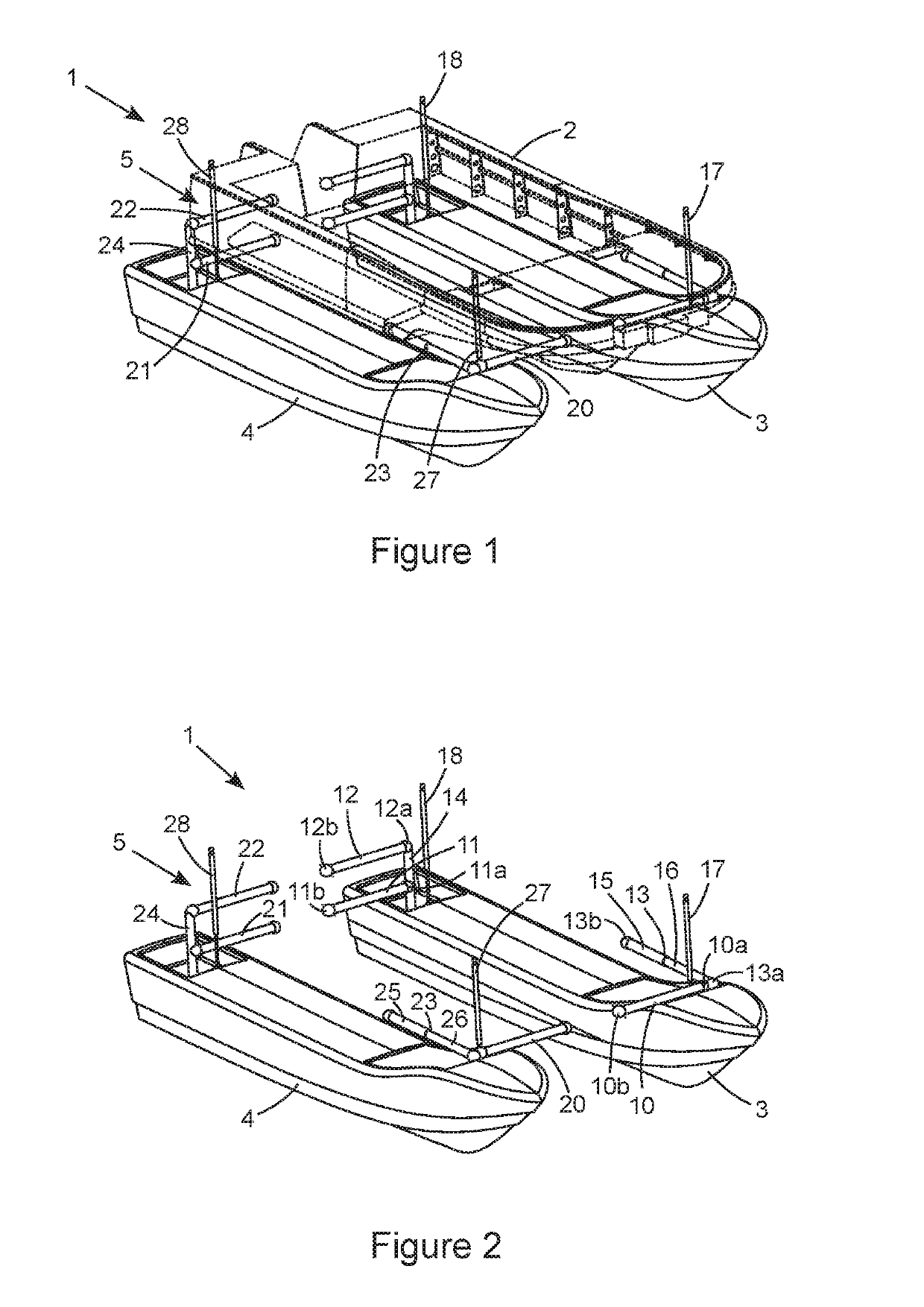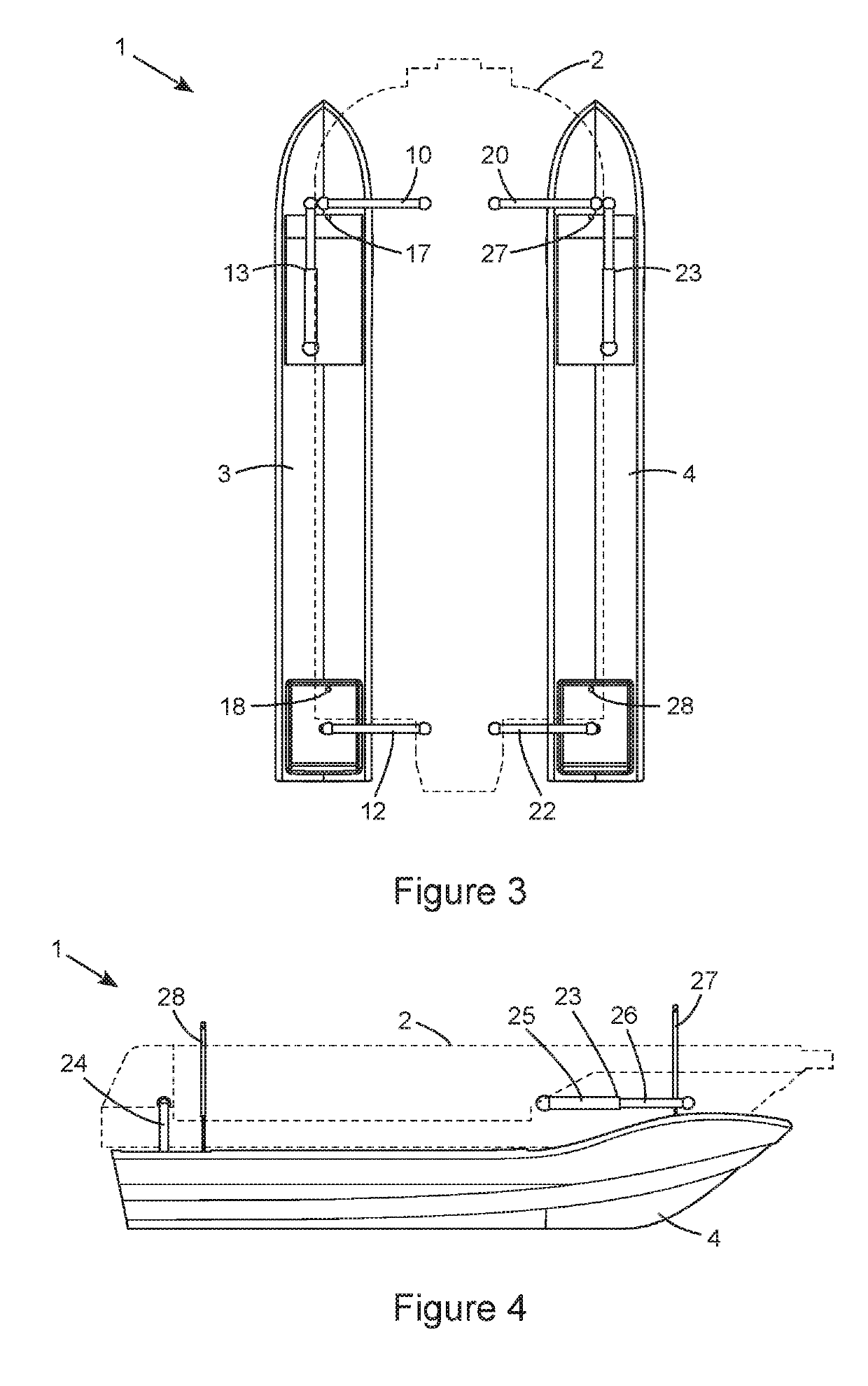Multi-link suspension for multi-hulled vessels
a multi-link suspension and multi-hull technology, applied in the direction of hulls, vessel construction, movement controllers, etc., can solve the problems of reduced lateral spacing between the hulls, limited vessel speed, and inability to provide a strong control of the yaw of the hydrofoil relative to the body portion, and achieve different stiffness
- Summary
- Abstract
- Description
- Claims
- Application Information
AI Technical Summary
Benefits of technology
Problems solved by technology
Method used
Image
Examples
Embodiment Construction
[0056]Referring initially to FIG. 1, there is shown a water craft 1 having a body portion or chassis 2 shown in dashed lines and transparency to enable the left and right hulls 3 and 4 and the suspension system 5 to be more revealed. Throughout the specification where the term chassis is used it is referring to the structure to which the hulls are located by the suspension system and can be interchangeable with the term body portion. The chassis can be a simple platform or include gunwales, a passenger cabin, cargo area. For example, as in automotive use, the chassis can be a ladder frame, or it can combine a ladder frame with a fixed cabin where the suspension loads are primarily input into the ladder frame, or it can be a monocoque where the suspension loads are input into a shell structure including the cabin. The water craft is shown at ride height, i.e. somewhere between the maximum and minimum height of the chassis above the hulls, typically between 30 and 70% of that total tr...
PUM
 Login to View More
Login to View More Abstract
Description
Claims
Application Information
 Login to View More
Login to View More - R&D
- Intellectual Property
- Life Sciences
- Materials
- Tech Scout
- Unparalleled Data Quality
- Higher Quality Content
- 60% Fewer Hallucinations
Browse by: Latest US Patents, China's latest patents, Technical Efficacy Thesaurus, Application Domain, Technology Topic, Popular Technical Reports.
© 2025 PatSnap. All rights reserved.Legal|Privacy policy|Modern Slavery Act Transparency Statement|Sitemap|About US| Contact US: help@patsnap.com



